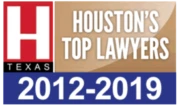Kids And Guns
January 09, 2023
Like most of the country, I watched in horror the events that transpired in Highland Park, Illinois. Investigators claim that Robert Crimo III took aim and fired 83 rounds at spectators from a rooftop, stopping only to reload his rifle. Seven people were shot dead. I saw the photo of Crimo. He looks young and this struck a chord with me.
It is likely that Crimo’s actions, if proven true, were the result of deep-seated psychiatric problems. Everything about this event is tragic, but it is not indicative of the real problems we have with violence in this country and in our community of Houston, Texas. The event in Highland Park is shocking and terrible but random murders by one lone gunman is rare. Our problems are much, much worse than that.
I represent 14 people charged with Capital Murder. Every one of them is a person of color. Every one of them, save one, was under the age of 21 years at the time of the alleged Murder. None of them are accused of killing just for the sake of killing, as Crimo appeared to have done. In twelve of my Capital cases, my clients were accused of killing for economic reasons, essentially to obtain stuff. In two cases, my clients’ motive is alleged to be vengeance of some sort because of a perceived “disrespect”. The two things that unite them all is that they could be considered “poor”, and all still had easy access to firearms. Sometimes multiple firearms.
Let me focus on that last part for a minute. I have Capital clients who come from families that have sincere difficulty keeping their children’s bellies full, but the young men in the house have no difficulty obtaining firearms. The supply of guns flooding our community exceeds the need, and so cost to obtain these firearms has dropped to the point where demand has increased. Basic economics have taken over in at-risk communities. Guns are passed back and forth like trading cards.
Immature young men without training or immediate need and who are suffering from economic security are handed guns. Is it surprising that these firearms are being used? Need is often created after the fact. Any use of a firearm by another creates need. If the kid down the street has a gun, and is threatening to use it, one can understand another kid feeling the need to possess a gun. Then, of course, we have a cycle throughout the larger community, where others who feel threatened by violence believe their only recourse is to fully arm themselves for battle. More firearms flood the community, and more are ultimately available.
I can hear the same tired argument in my head, “Nobody made these kids commit robbery or murder. People commit crimes, not guns.” All that is true, but without access to a gun, no murder could have occurred. Placing firearms in the hands of the youngest, least emotionally capable in our community is asking for trouble, and this is exactly what we have done by making guns so ubiquitous.
Of course, the horse is out of the barn now. The Supreme Court in New York State & Rifle and Pistol Association v. Bruen has appeared to make it impossible to enact reasonable gun control legislation. (This Supreme Court law struck down a New York law requiring proof of a special need for carrying a gun as violative of the constitutional right to bear arms.) Texas has changed its carrying law, decriminalizing almost any possession of a handgun so long as the individual hasn’t been convicted of a felony or in the actual act of committing a crime. At this point, even if reasonable gun control legislation was put into place, it would take decades to sufficiently reduce the supply of guns.
If the supply of guns is a given, can anything be done to reduce violence or are we fated to arm every man, woman and child in the country and prepare for war? Some suggest incarceration as the answer. I watch prosecutors argue this to juries all the time. However, we already incarcerate more people for crime than any other country in the world, yet violence increases.
When I was a prosecutor, I had a front row seat in the 80’s and early 90’s when “The War on Drugs” was being waged in Texas. We were handing out 30- and 40-year sentences like candy in Harris County. Juries were regularly sentencing repeat drug offenders to life in prison. The argument was always the same, send enough people to prison and habits will change. Habits didn’t change. The only thing that changed was the prisons became too overcrowded to maintain and truly violent criminals were being released early because the prison beds were being filled with low level drug offenders. In the end, the legislature had to reconstruct the drug laws, changing the possession of a Penalty Group I from a first-degree felony to a state jail offense.
I have a different front row seat now. I speak to these kids charged with Capital Murder. None of them are evil. The ones that admit guilt to me were all aware that murder carries with it a substantial prison sentence at the time they committed the act, but the penalty didn’t even cross their minds. Some never intended to commit murder, but circumstances spun out of control. For others, they were parties to an offense that resulted in someone else firing the trigger. Others fully intended to commit murder. None of them, however, considered the possible punishment before they committed their crime. A jury argument that a life sentence would deter future violence is successful because jurors themselves believe they would be deterred by that kind of punishment, so they impute their motivations to the defendant on trial. However, kids that get into this trouble are looking at the world through different lenses.
My old felony Chief Mark Vinson was one of my most favorite people in the world. Mark was an army veteran who fought in the Vietnam War and retired as a Major after 21 years of service. Thereafter, he attended Law School and became a prosecutor. In court, he was impeccably put together, and held himself out with the stiff dignity of the Army officer he once was. Every morning, I used to ask him if he had remembered to make his bed, since he once told me that he could tell a lot about a person by how he made his bed up each morning. I was much younger than him, and sometimes did not understand the import of his wisdom until much later in life. (I also never made my bed.)
One day I was complaining to Mark about a particular group of young defendants who were engaged in a theft racquet. I thought their lawyer was minimizing the severity of the crime and made some derogative statement about the young men charged, about how they would be running through the criminal system for the rest of their lives. I didn’t realize it then, but now with the benefit of age understand that I was comparing them to my own situation. I was young and about the same age as the defendants I was complaining about. I was a lawyer and prosecutor and they were never-do-wells with criminal backgrounds. Mark took me aside, looked me in the eyes and said something I will never forget. He said, “Ed, the only thing wrong with those kids is they never had a dream.”
I think about Mark every time I speak to one of my young clients. My Capital Murder clients don’t want to be in jail. All would like to bail out and prefer not to go to prison. However, they can’t articulate another future for themselves. They may profess to want what you think are the meaningful things in life, but none of them believe those things are a real possibility. They spend their entire lives seeing exactly what life has to offer to them, and it is not substantially different than what is offered in prison. They live in dirty boxes and work sporadically at minimum wage jobs. As children, they either lived with mothers who spent their waking hours attempting to get high or mothers who followed the rules, toiled nonstop and settled firmly into poverty. They never knew their father. They were ignored in school, unless they ran the risk of embarrassing their teacher with a failing standardized test. School was never made relevant to their future. These kids don’t dream.
We have a problem, but it is not the crazy lone gunman who stands on the top of a building with an assault rifle. It is not the Supreme Court. It is not voters whose only concern is the perpetuation of their right to buy any kind of gun they want. Our problem is worse than that. We have armed an entire sub-group of kids who have literally nothing left to lose. If we can’t reverse the flow of guns that gets to these kids, we must address the kids themselves. As a criminal defense lawyer, I have argued this repeatedly. I always get the same response. Maybe when we can no longer afford to build new maximum-security prisons somebody will listen. Until then, I will keep doing my job.
























Reviews Matter
★
★
★
★
★
★
★
★
★
★
★
★
★
★
★
★
★
★
★
★
